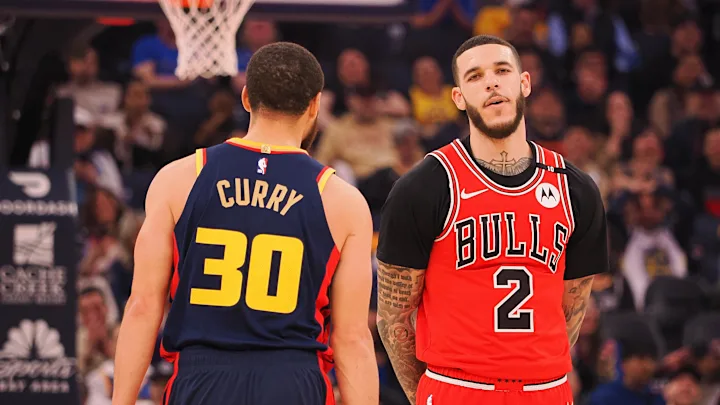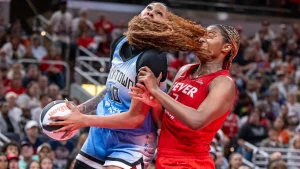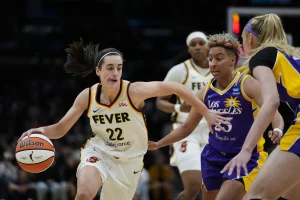
The performances of Dennis Schröder, Kyle Anderson, and Andrew Wiggins in their debuts
The debuts of NBA players are often highly anticipated, as fans and analysts alike eagerly await the first glimpse of what a player can bring to the league. In this case, we’ll examine the debut performances of three prominent players: Dennis Schröder, Kyle Anderson, and Andrew Wiggins. Each of these players made a significant impact on their respective teams and careers, and their debuts were indicative of the roles they would come to play in the NBA.
Dennis Schröder: A Strong Start in the NBA
Dennis Schröder, a German point guard known for his speed, ball-handling skills, and scoring ability, made his NBA debut on October 29, 2013, with the Atlanta Hawks. Schröder was selected 17th overall in the 2013 NBA Draft, and his debut performance would serve as a preview of the dynamic playmaking and scoring potential he would showcase over the course of his career.
Debut Game Overview
In his debut game against the Dallas Mavericks, Schröder came off the bench as a backup to the seasoned veteran Jeff Teague. The Hawks were up against a formidable Mavericks team, led by Dirk Nowitzki, and Schröder’s role was to inject energy into the game when called upon. Despite limited playing time, Schröder made an immediate impression with his speed and ability to run the offense.
Schröder played a modest 12 minutes, scoring 4 points and dishing out 2 assists. His shooting was efficient, making 2 of 3 field goals, including 1 of 2 from three-point range. Schröder also contributed defensively with 1 steal. While the numbers may not have been eye-popping, Schröder’s confidence and composure on the court were noticeable. He exhibited the quickness that would later become his trademark and showed flashes of his ability to create plays for teammates.
Analysis of Performance
Although his debut was not a standout statistical performance, Schröder’s impact was clear. His quickness allowed him to break down defenders and generate opportunities for others. In the early stages of his career, it was evident that he had a knack for pushing the pace and playing at a speed that few defenders could keep up with. His 2 assists in limited minutes demonstrated his court vision and his awareness of his teammates’ positioning.
Schröder’s debut also showcased his potential as a defensive player. Despite his small stature (standing at 6’1″), he was able to use his speed and agility to harass ball handlers and create turnovers. This defensive tenacity would become a hallmark of his career, as he developed into one of the more consistent defensive point guards in the league.
Overall, Schröder’s debut was a positive first impression, one that hinted at the exciting potential he would go on to fulfill in the NBA.
Kyle Anderson: A Smooth and Methodical Debut
Kyle Anderson, known for his slow, deliberate style of play that earned him the nickname “Slo-Mo,” entered the NBA as the 30th overall pick in the 2014 NBA Draft. Anderson was selected by the San Antonio Spurs, a team known for developing players with unique skill sets, and his debut would show why the Spurs believed in his potential.
Debut Game Overview
Kyle Anderson made his debut on October 29, 2014, in a game against the Dallas Mavericks. As a rookie, Anderson’s role on the Spurs was to come off the bench and provide depth at the forward position. The Spurs were already an established championship contender, and Anderson’s ability to contribute in various areas of the game was key to his value.
In his debut game, Anderson played 8 minutes, scoring 3 points and grabbing 2 rebounds. He also recorded 1 steal and 1 assist, providing a glimpse of his versatility. While the numbers themselves weren’t spectacular, Anderson’s poise and intelligence on the court were immediately apparent.
Analysis of Performance
Kyle Anderson’s debut was marked by a calm and steady presence. Although he was known for his slower pace, it was clear that his basketball IQ was high, as he was able to make the right plays and contribute to the team’s offense and defense. Anderson’s debut performance highlighted his unique ability to control the tempo of the game. While he didn’t necessarily wow the crowd with athleticism or high-flying plays, his court vision and decision-making were already advanced for a rookie.
Defensively, Anderson showcased his ability to anticipate plays and read the opposing offense. His long arms (standing at 6’9″) and quick thinking allowed him to disrupt passing lanes and make valuable contributions on the defensive end. His steal in his debut game was a good indicator of his defensive awareness, a quality that he would continue to develop throughout his career.
Despite limited minutes, Anderson’s debut performance demonstrated his ability to fit into the Spurs’ system of team-oriented basketball. His ability to make simple plays and maintain control of the game was something that would become a key part of his career, particularly as he moved into larger roles with other teams in subsequent seasons.
Andrew Wiggins: A Highly Anticipated Debut
Andrew Wiggins, one of the most highly touted prospects of the 2014 NBA Draft, entered the league with immense expectations. Wiggins, selected first overall by the Cleveland Cavaliers before being traded to the Minnesota Timberwolves, was seen as a future star with his athleticism, scoring ability, and potential to be a two-way player.
Debut Game Overview
Wiggins made his NBA debut on October 29, 2014, in a game against the Memphis Grizzlies. His debut was highly anticipated, and he was expected to immediately make an impact for the Timberwolves. In his first game, Wiggins started and played 30 minutes, showing off his athleticism, scoring ability, and defensive potential.
Wiggins finished his debut with 6 points, 2 rebounds, 1 assist, and 1 steal. He made 3 of 4 field goals, but he didn’t make any three-pointers in his debut. Wiggins’ performance was solid but far from extraordinary, as he demonstrated flashes of his talent without putting together a dominant showing.
Analysis of Performance
Wiggins’ debut was a mixed bag, but it was evident that the raw talent that made him the first overall pick was on full display. His scoring ability was apparent, particularly when he drove to the basket with his explosive athleticism. However, the game also showed that Wiggins was still adjusting to the speed and intensity of the NBA. He had a tendency to be passive at times, and his playmaking wasn’t as refined as some had hoped.
What stood out in Wiggins’ debut, however, was his defense. Despite being a rookie, Wiggins showed a commitment to guarding opposing players, using his length (he stands at 6’7″) and athleticism to contest shots and disrupt passing lanes. His defensive effort would be a crucial part of his development as a two-way player in the NBA.
Wiggins’ debut, while not spectacular, gave fans a sense of his potential. It would take time for him to develop into the player that many had expected him to be, but his first game was a reminder that the tools were all there for him to become a star in the league.
The debuts of Dennis Schröder, Kyle Anderson, and Andrew Wiggins serve as a reminder that first impressions in the NBA can sometimes be misleading. While none of these players had a truly spectacular debut, their performances showcased the potential that would later define their careers.
Dennis Schröder’s debut was a preview of his speed and playmaking ability, as he showcased his quickness and defensive potential in limited minutes. Kyle Anderson’s debut was marked by his calm demeanor, basketball IQ, and ability to fit into a team-oriented system. Finally, Andrew Wiggins’ debut demonstrated the raw athleticism and scoring ability that made him the top pick in the draft, even if he still needed time to fully develop.
Each of these players went on to have significant careers in the NBA, with Schröder becoming a steady contributor as a starting point guard, Anderson carving out a niche as a versatile forward, and Wiggins developing into an important two-way player. Their debuts may not have been historic, but they marked the beginning of what would be promising and successful careers.





